As the Irish Tillage and Land Use Society tour travelled through the Darling Downs in Queensland, there was quite a variety of crops to be seen growing in the fields. We met with Tim Fraser from Syngenta close to Chinchilla, and he took us to a number of farms in the area that had typical farming systems for the region.
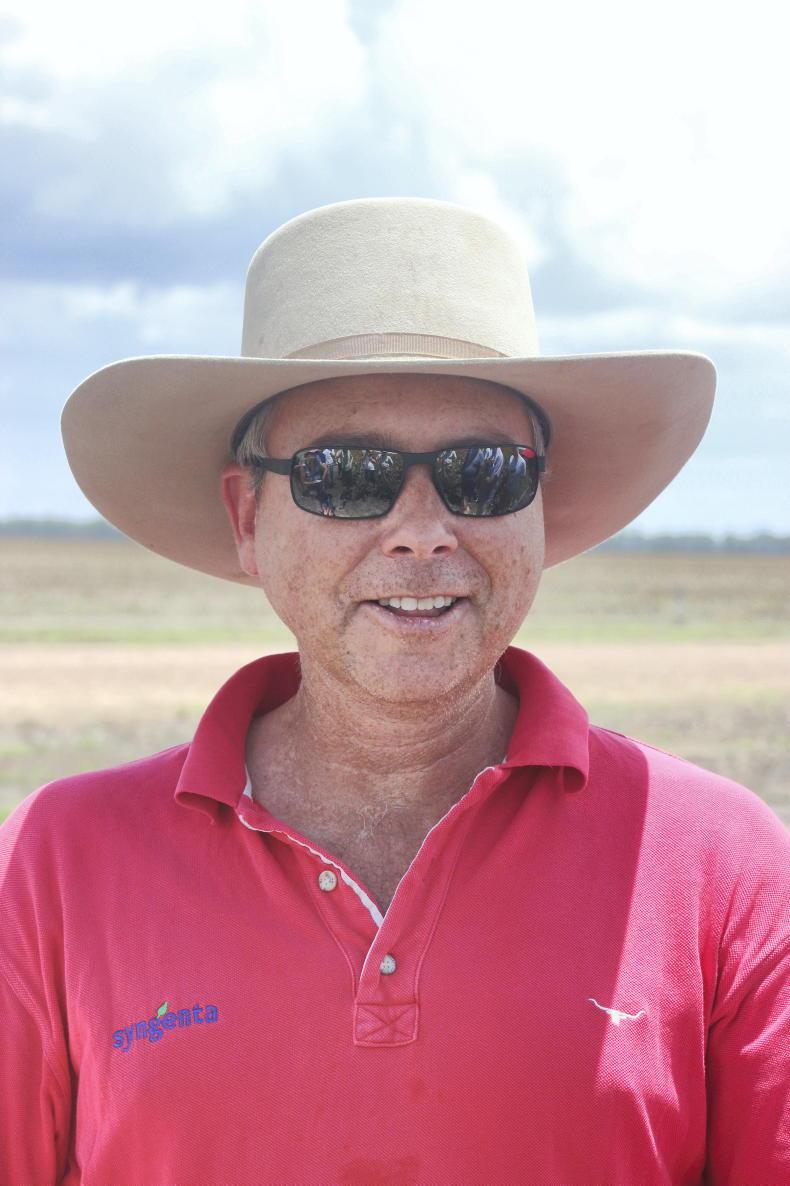
Tim Fraser of Syngenta helped organise a number of visits for the group.
He told us that the average farm in the area was between 3,000-4,000ac, but farm sizes ranged from 1,000-12,000ac, through a combination of owned and leased land. While these are big farms, Tim said that the corporate farms, where they exist, tend to be between 20,000ac-30,000ac in size.
While there are many different crops grown in the region, sorghum is the most common land use at 60-70%. This requires between 24 and 26 inches of rainfall per annum, so irrigation is often needed. The grain from sorghum, also called milo, is the main cereal used in feedlots further north in the state and these can be up to 50,000 head in size.
Land in the area tends to be about AUS$4,000 per acre for dryland, but land with access to irrigation can be above AUS$8,000/ac. Basically, you pay for what you get.
The crop
Sorghum is planted from September through to January. Planting date is getting earlier over time, but there is a real risk from frost with the crop. It is normally sown at about 70,000 seeds per hectare and normal grain yield is around 8-10t/ha. Varieties are mainly hybrid.
The sorghum plant is similar to maize, but it sets its seeds on the top of the stem, equivalent to where the anthers would be on a maize plant. It is not as tall, but a lot of stubble can be left standing post-harvest. The crop is often desiccated for harvest.
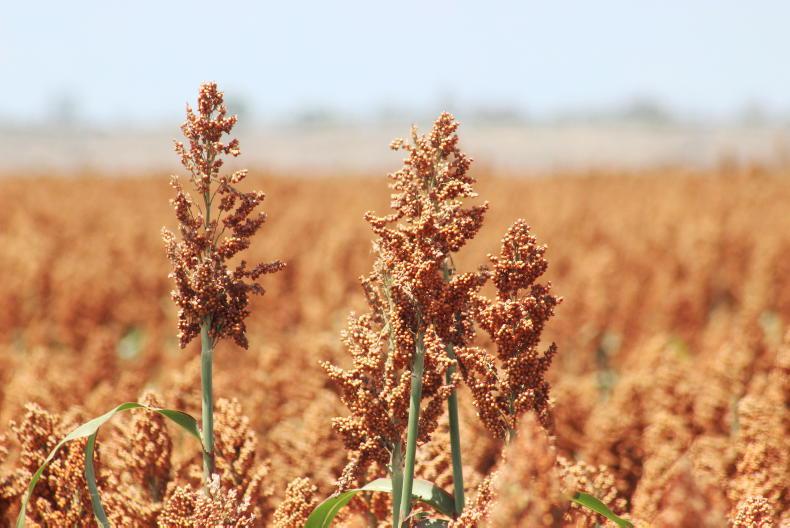
Heads of sorghum.
It is primarily an energy crop, with a protein content between 6 and 12%, depending on the year. However, close to 11% is around normal. It is sometimes harvested as silage, but that is a high-risk situation.
Tim took us to meet with a sorghum grower in the area, Greg Hartwick. Greg told us that nitrogen is the main nutrient used, but that they are beginning to use phosphate and potash now too. The nitrogen is normally put in at around seed depth at planting, but they are trying to get the P and K down much deeper.
While there are many different crops grown in the region, sorghum is the most common land use at 60-70%
Like any crop, sorghum has a number of pest risks. Greg said that they spray a virus onto the crop to kill some of these pests – field scale biological control. He also talked about stem-based charcoal rot, which can affect the stems and cause lodging. This disease likes warm, hot weather at flowering to aid infection and it can certainly get those conditions.
Sorghum is normally harvested around April or May and can be grown as a summer or winter crop. Crops in the area we visited around Chinchilla tend to be surface irrigated and there is some double cropping of sorghum and chickpeas, or wheat/barley and mung beans.

Special attachments are used on combine headers when harvesting sorghum.
As well as the recycling of nutrients, the stubble of sorghum is said to be good for life and biology in the soil.
When we visited in January 2020, the price of sorghum was high, around AUS$450/t (€275/t), because of the ongoing fodder crisis following three years of drought. Normal price would be around $250/t (€153/t), but it has also been as low as $150/t (€92/t).
Nitrogen
With normal yields ranging from 8-10t/ha, it is hardly surprising that the crop can use a lot of nitrogen. Greg told us that it will take up around 350kg N/ha of plant-available nitrogen, which can originate from the soil or applied fertiliser.
Soil N testing is practiced and 60-80kg of soil nitrogen is common in fields in the area. Soil N levels are influenced by the rotation being practiced. Soils are normally tested for N to a depth of 90-120cm.
Fertiliser is a big cost for the crop, especially in dryland farming where yields are lower. Water is also a big expense, where it is available.
There was quite an amount of pivot irrigation in this region and a typical paddock size is roughly 100ha, but they do vary.
Great gas
This particular farm belonged to a gas company and there were numerous gas pumping stations in fields close to the roads. Interestingly, landowners only own one meter depth of the land they farm, with the mineral rights going to the government or others.
The gas in the region is produced from a combination of bore holes, fracking and the gasification of coal.

One of the many gas pumping facilities seen in fields in the area around Chinchilla in Queensland.
Some of the gas carries salty water with it from deep in the ground. This is separated above ground and the water is then cleaned up and used for irrigation.
Silage sorghum
While the majority of sorghum is grown as a source of grain for livestock, some of it may also be harvested as fodder, like maize. However, we were told that maize makes a better silage.
If sorghum suffers stress when growing, it can produce harmful levels of prussic acid, otherwise known as hydrogen cyanide, which is toxic to livestock. Prussic acid can form when leaf tissue is ruptured, as with grazing or chopping.
Snippets
During our travels that day, Tim commented that there were fines for trespassing by lobbyists on farms or farmland.
He also commented that farmers in Australia were very conscious of the changing landscape in the EU. Decisions on the use or removal of chemical actives in Europe quickly spill over to Australia and these messages are frequently delivered by anti-farming bodies.
Moving north
As we travelled north from Dalby, the land use changed more towards livestock. This was still very dry country. In 2019, the annual rainfall was 8in for the year and 6in of that fell in March.
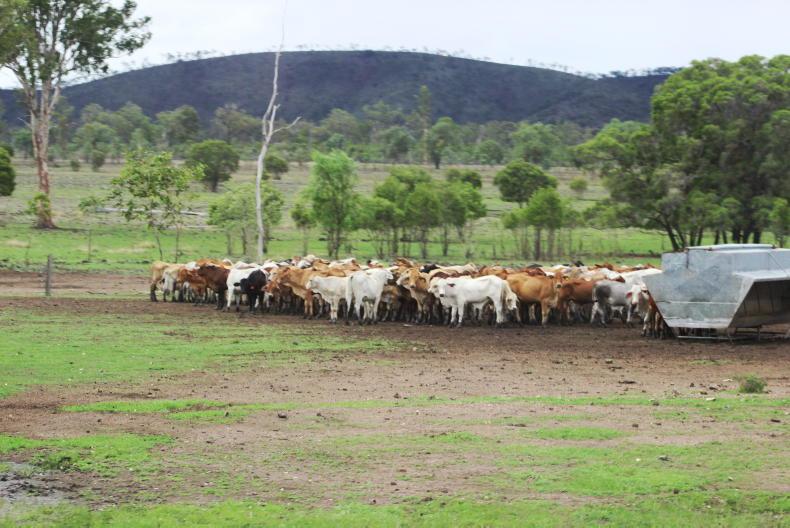
As we moved north from the Darling Downs, the countryside became a lot more rolling and crops gave way to cattle production.
The countryside also became more rolling as it switched from cropping to cattle. Tim commented that growth hormones can be used in beef production in Australia, but their use is now much lower than it used to be. He put this down to the improved genetics in the modern breeding stock.
By the time we were leaving the Darling Downs, the drought was virtually over. We had seen torrents of rain generate flash floods and run across land as though it were concrete. We had seen many different crops and were about to see many more, as we made our way towards sugar cane country north of Bundaberg and the many crops now growing to replace this failing star.
As the Irish Tillage and Land Use Society tour travelled through the Darling Downs in Queensland, there was quite a variety of crops to be seen growing in the fields. We met with Tim Fraser from Syngenta close to Chinchilla, and he took us to a number of farms in the area that had typical farming systems for the region.

Tim Fraser of Syngenta helped organise a number of visits for the group.
He told us that the average farm in the area was between 3,000-4,000ac, but farm sizes ranged from 1,000-12,000ac, through a combination of owned and leased land. While these are big farms, Tim said that the corporate farms, where they exist, tend to be between 20,000ac-30,000ac in size.
While there are many different crops grown in the region, sorghum is the most common land use at 60-70%. This requires between 24 and 26 inches of rainfall per annum, so irrigation is often needed. The grain from sorghum, also called milo, is the main cereal used in feedlots further north in the state and these can be up to 50,000 head in size.
Land in the area tends to be about AUS$4,000 per acre for dryland, but land with access to irrigation can be above AUS$8,000/ac. Basically, you pay for what you get.
The crop
Sorghum is planted from September through to January. Planting date is getting earlier over time, but there is a real risk from frost with the crop. It is normally sown at about 70,000 seeds per hectare and normal grain yield is around 8-10t/ha. Varieties are mainly hybrid.
The sorghum plant is similar to maize, but it sets its seeds on the top of the stem, equivalent to where the anthers would be on a maize plant. It is not as tall, but a lot of stubble can be left standing post-harvest. The crop is often desiccated for harvest.

Heads of sorghum.
It is primarily an energy crop, with a protein content between 6 and 12%, depending on the year. However, close to 11% is around normal. It is sometimes harvested as silage, but that is a high-risk situation.
Tim took us to meet with a sorghum grower in the area, Greg Hartwick. Greg told us that nitrogen is the main nutrient used, but that they are beginning to use phosphate and potash now too. The nitrogen is normally put in at around seed depth at planting, but they are trying to get the P and K down much deeper.
While there are many different crops grown in the region, sorghum is the most common land use at 60-70%
Like any crop, sorghum has a number of pest risks. Greg said that they spray a virus onto the crop to kill some of these pests – field scale biological control. He also talked about stem-based charcoal rot, which can affect the stems and cause lodging. This disease likes warm, hot weather at flowering to aid infection and it can certainly get those conditions.
Sorghum is normally harvested around April or May and can be grown as a summer or winter crop. Crops in the area we visited around Chinchilla tend to be surface irrigated and there is some double cropping of sorghum and chickpeas, or wheat/barley and mung beans.

Special attachments are used on combine headers when harvesting sorghum.
As well as the recycling of nutrients, the stubble of sorghum is said to be good for life and biology in the soil.
When we visited in January 2020, the price of sorghum was high, around AUS$450/t (€275/t), because of the ongoing fodder crisis following three years of drought. Normal price would be around $250/t (€153/t), but it has also been as low as $150/t (€92/t).
Nitrogen
With normal yields ranging from 8-10t/ha, it is hardly surprising that the crop can use a lot of nitrogen. Greg told us that it will take up around 350kg N/ha of plant-available nitrogen, which can originate from the soil or applied fertiliser.
Soil N testing is practiced and 60-80kg of soil nitrogen is common in fields in the area. Soil N levels are influenced by the rotation being practiced. Soils are normally tested for N to a depth of 90-120cm.
Fertiliser is a big cost for the crop, especially in dryland farming where yields are lower. Water is also a big expense, where it is available.
There was quite an amount of pivot irrigation in this region and a typical paddock size is roughly 100ha, but they do vary.
Great gas
This particular farm belonged to a gas company and there were numerous gas pumping stations in fields close to the roads. Interestingly, landowners only own one meter depth of the land they farm, with the mineral rights going to the government or others.
The gas in the region is produced from a combination of bore holes, fracking and the gasification of coal.

One of the many gas pumping facilities seen in fields in the area around Chinchilla in Queensland.
Some of the gas carries salty water with it from deep in the ground. This is separated above ground and the water is then cleaned up and used for irrigation.
Silage sorghum
While the majority of sorghum is grown as a source of grain for livestock, some of it may also be harvested as fodder, like maize. However, we were told that maize makes a better silage.
If sorghum suffers stress when growing, it can produce harmful levels of prussic acid, otherwise known as hydrogen cyanide, which is toxic to livestock. Prussic acid can form when leaf tissue is ruptured, as with grazing or chopping.
Snippets
During our travels that day, Tim commented that there were fines for trespassing by lobbyists on farms or farmland.
He also commented that farmers in Australia were very conscious of the changing landscape in the EU. Decisions on the use or removal of chemical actives in Europe quickly spill over to Australia and these messages are frequently delivered by anti-farming bodies.
Moving north
As we travelled north from Dalby, the land use changed more towards livestock. This was still very dry country. In 2019, the annual rainfall was 8in for the year and 6in of that fell in March.

As we moved north from the Darling Downs, the countryside became a lot more rolling and crops gave way to cattle production.
The countryside also became more rolling as it switched from cropping to cattle. Tim commented that growth hormones can be used in beef production in Australia, but their use is now much lower than it used to be. He put this down to the improved genetics in the modern breeding stock.
By the time we were leaving the Darling Downs, the drought was virtually over. We had seen torrents of rain generate flash floods and run across land as though it were concrete. We had seen many different crops and were about to see many more, as we made our way towards sugar cane country north of Bundaberg and the many crops now growing to replace this failing star.









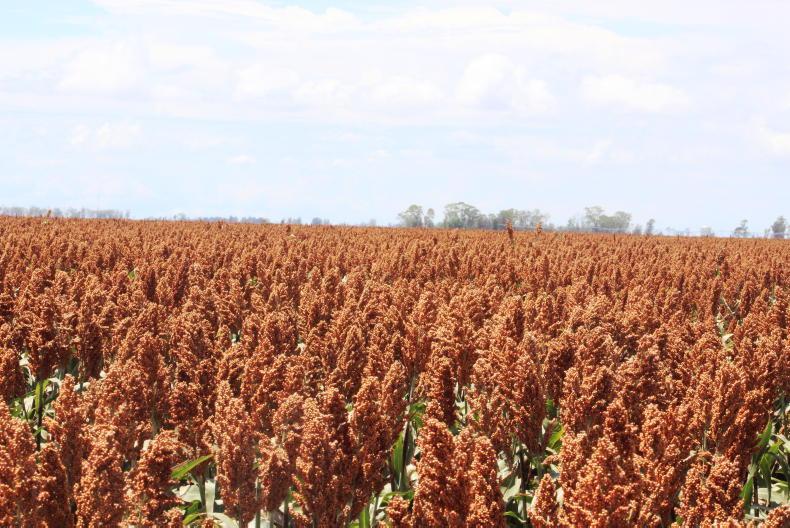
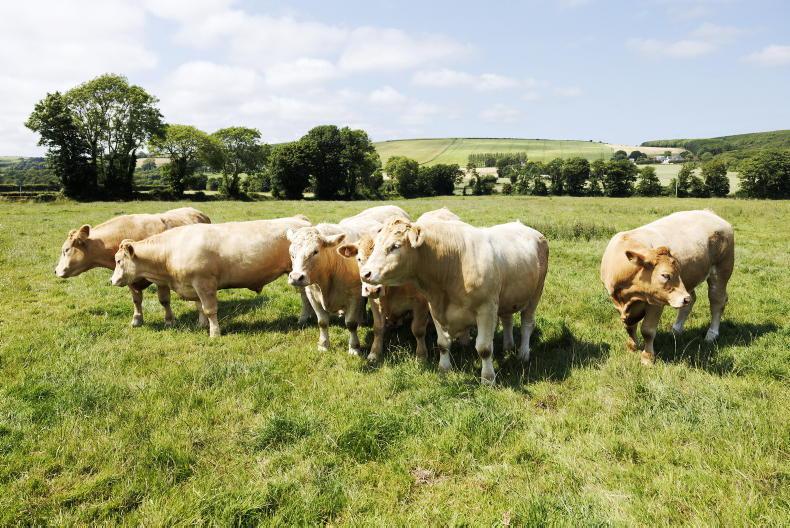

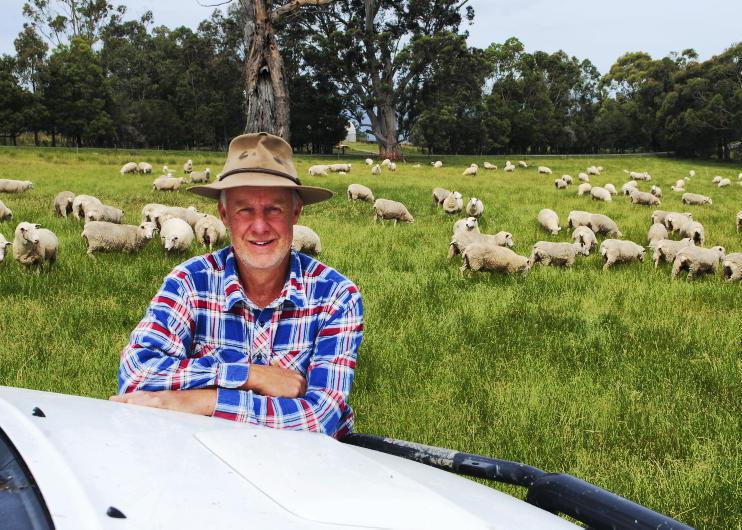

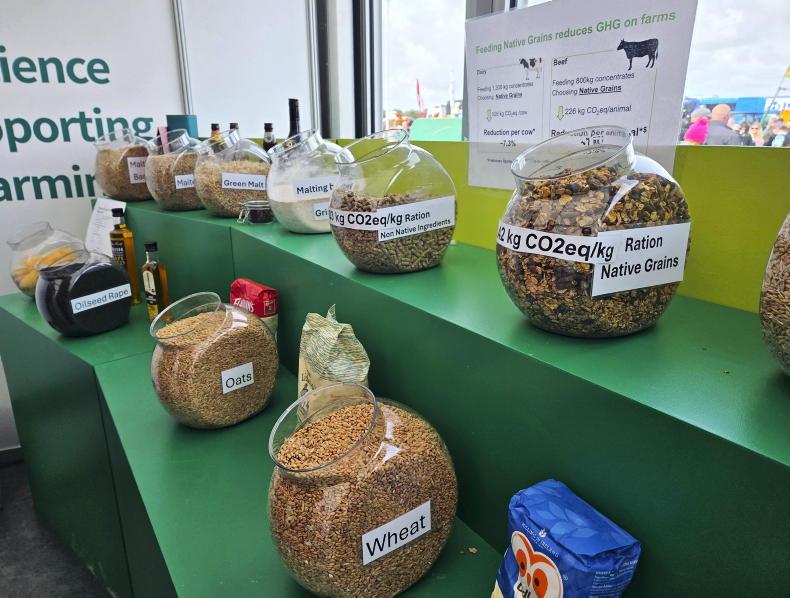
SHARING OPTIONS